Department of Infectious Diseases
History of department
The history for department of infectious diseases in NMU is indissolubly linked with the history for establishment of medicine in the territory of Russian empire, which included the significant part of Ukrainian lands. At that time people endlessly suffered from numerous epidemics of cholera, plaque, spotted fever, enteric fever and recurrent fever. But even during “calm” years, i.e. when the epidemics receded, the residents in Ukraine suffered from smallpox, diphtheria, scarlet fever, a great number of intestinal infections, which were met in the territory of Ukraine as “everyday” diseases. At that time the following proverb was popular “There is no protection against natural smallpox as against love”.
The leading scientists at that time paid the significant attention to the issues on struggle against infections. Thus, the great doctor-surgeon Mykola Ivanovych Pyrogov devoted a separate fundamental scientific work to study of pathological changes at cholera. Pupil and follower of M.I. Pyrogov, professor A.P. Walter, having studied the changes in dead bodies during epidemics of cholera in Kyiv in 1847, paid attention to determination for essence of cholera process and semiotic importance for its accompanying features to ground the rational treatment of this terrible disease.
The significant sickness rate required enlarging the medical fund and on 23, November, 1875 in Shovkovychna mountain in Kyiv Cesarevitch Oleksander city hospital (hereinafter in the text Oleksandrivska hospital) was consecrated. However many years had passed till the hospital became the constant base for hospital clinics in medical faculty: the solution of this problem was slowed down because of constant misunderstandings between administration of hospital and clinics.
The epidemics were constantly broken out in Kyiv, the great role in their liquidation was played by union of Kyiv doctors, which was organized already in 1840 and united the most progressive first-rate scientists in medical faculty. Thus, professor G.G. Briuno (1862-1919), who was the head at department of obstetrics and gynecology, in 1894 during epidemics of cholera in Ukraine and in Kyiv fought against it as an ordinary doctor of infectious barrack. At the initiative of famous scientists – O.D. Pavlovskyy, V.T. Pokrovskyy, G.M. Minkh, V.K. Vysokovych, F.G. Yanovskyy, – in 1894 (due to other data – in 1895) they established Kyiv union on struggle against infectious diseases. Further, at the initiative of O.D. Pavlovskyy, head at department of surgical pathology and therapy, one of the first in Russia Pasteur’s station was established, where he became the head, and in 1896 – bacteriological institute, built at the expense of charitable contributions, where he was the first director and managed the division of serums. Further for a long time O.D. Pavlovskyy worked in Pasteur’s institute in Paris, after that his passion became bacteriology. Under his direct supervision they developed and applied the anticholeric (1893), antistreptococcic (1894) and for the first time in Russia antidiphtheritic serum (1895), as well as the serum against tetanus.

In 1892 academician Feofil Gavrylovych Yanovskyy (1860-1928) started reading in fact the first course of infectious diseases, which was called “Clinical microscopy and bacteriology”. In 1899, working as the head at infectious and therapeutic divisions in Oleksandrivska hospital, he defended the dissertation on topic “To biology of typhoidal bacilli”. The pupils of this great teacher were not less talented – V.Kh. Vasylenko, B.Ye. Votchal, V.M. Ivanov, B.S. Shkliar, F.Ya. Pryymak, O.F. Kakovskyy and many others. However, at that time there was no independent department of infectious diseases. Constantly swirling epidemics of infectious diseases (and Ukraine took one of the first places due to the amount of the deceased from it in Europe), forced the group of leading scientists at that time, among them there were V.P. Obraztsov, F.K. Bornhaupt, A.D. Pavlovskyy, to solicit to establish the independent department of infectious diseases. However their petition was rejected.
The period of civil war and establishment of Soviet power negatively influenced on professors in medical faculty in university. During the period of 1917-1922 6 professors left the country for ever, at least 20 professors died (professor G.G. Briuno was killed in the street during struggle for city, 5 professors died from spotted fever, the death of professor V.P. Obraztsov was accelerated by hunger and cold.
At the beginning of XX century Ukraine took one of the first places in Europe due to amount of the deceased from infectious diseases. 24 333 148 cases of infectious diseases was registered in Ukraine for 1900-1924, without taking into consideration the Asiatic cholera (since 1905 until 1914 – 76 579 cases). Thus, in 1921 all-Ukrainian conference on issues of medical education, taking into consideration the acute public need in qualified aid, pronounced for introduction of specialization into training system of doctors. In the same year medical faculty was reorganized into Kyiv medical institute and F.G. Yanovskyy was elected to the post of the head at department of faculty therapeutic clinic with course of infectious diseases.
But F.G. Yanovskyy understood well that it was necessary to teach the infectious pathology at separate department. And under his proposition on 28, October, 1925 at the meeting of Academic 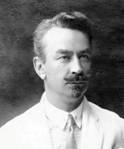 Council in Kyiv medical institute they took the decision about organization of separate department of infectious diseases, the temporary performance of duties for the head was given to professor Max Moyseyovych Gubergryts, who was the head at department of general pathology at the same time.
Council in Kyiv medical institute they took the decision about organization of separate department of infectious diseases, the temporary performance of duties for the head was given to professor Max Moyseyovych Gubergryts, who was the head at department of general pathology at the same time.
Due to the order of KMI, dd. 28, December, 1925, the first employees at department were senior assistant Borys Yakovych Padalka (future head at department of infectious diseases), junior assistant Olimpiy Prokopovych Matveyev. A bit later Grygoriy Ivanovych Khomenko was appointed to the post of junior assistant, who further became the professor and head at department of infectious diseases in Kyiv institute on improvement of doctors. The main clinical base of department was the infectious diseases ward in Oleksandrivska hospital, built in 1901. The lecture course in new department started on 26, January, 1926, practical classes – in April in the same year. Already since 1928 the students’ scientific club started successfully functioning at department.
In 1927 due to transfer of M.M. Gubergryts to the post of the head at department of propedeutics of internal diseases, the head at department of infectious diseases became the pupil of F.G. Yanovskyy – Anatoliy Matviyovych Ziukov. He was born in the family of clerks in c. Poltava on 19, November (due to old style) 1886. After graduation from gymnasium he entered medical faculty in Kyiv university, graduated with honors from it in 1911.

On photo in the 1st row the fourth person on the left F.G. Yanovskyy, third one on the left – A.M. Ziukov
The number of students, who studied at department, was constantly increased. Thus, in 1935 already 930 students from different faculties were studied at department. The wide consulting work was carried out in Kyiv and in the periphery. The department rendered the serious aid to local health care authorities in antiepidemic events. At that time already 8 workers were working – professor, assistant professor and 6 assistants. The purposeful study on pathogenesis, diagnostics and improvement in treatment of the most wide spread infectious diseases at that time – enteric and spotted fever, dysentery, helminthoses was carried out under supervision of A.M. Ziukov. At that time 3 doctors of science were trained. The outstanding work by G.I. Khomenko “Treatment of bacillary dysentery” was assessed by Academic Council as a doctor’s dissertation without necessity in previous defense of candidate’s dissertation. Since 1936 the department of infectious diseases in KMI received the additional base in the 1st medical infectious hospital, located in the territory of Pechersk Lavra.
In July 1941 KMI evacuated firstly to Kharkiv because of attack of German army, further to Cheliabinsk, the department of infectious diseases was there headed by assistant professor Sergeyev M.V. However, not all professors went to the evacuation, among them was A.M. Ziukov and B.Ya. Padalka, who had to remain due to old age and exacerbation of chronic diseases. In the occupied Kyiv all higher schools, except medical and veterinary one, were liquidated due to special order by hauptleiter of Ukraine Erich Koch. Later so-called “Polymedicum” started functioning, where most professors and teachers, who left in the city, were engaged to teaching. At the end of 1947 A.M. Ziukov moved to department of propedeutics of internal diseases and the head at department of infectious diseases became assistant professor O.P. Matveyev. However, already in summer 1942 the administration of “Polymedicum” was arrested, their further destiny is unknown; in October 1942 it ceased its functioning. At once after liberation of Kyiv (1943) medical institute was revived and already on 13, December, 1943 renewed the classes of students.
The main directions in scientific activity of A.M. Ziukov were the issues on pathogenesis of internal diseases. He took the post of the head at department of infectious diseases since 1927 until 1953 inclusive, except two years of Kyiv occupation by German fascist invaders. He died early on 13, December, 1953 from recurrent infarction on the 66th year of life.
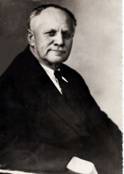 In 1954 the department was managed by professor Borys Yakovych Padalka (1883-1964), who worked at department since its organization – 25, January, 1925. B.Ya. Padalka posses the exclusive ability to distinguish the most pathognomonic among a great number of symptoms for diseases. Thus, the early clinical evidence of enteric fever – symptom for dullness of percussion sound in the ileocenal area, was included into special literature under title “Padalka’s syndrome”. He for the first time made the large-scale researches on pathogenesis for so-called chronic dysentery, having generalized them in monograph “Dysentery” (1955). Contrary to prevalent point of view (which, in fact, lost its influence only recently), it was proved the ineligibility of this term, the shigellosis was definitely determined as an acute infectious disease with possible lingering course. If the recurrent infection is absent the organism is released from causative agent during the nearest days or weeks that are of principal importance in the struggle against shigellosis, based on general hygienic measures. The main scientific direction at department became the problem of republican importance “Epidemic hepatitis / Botkin’s disease”.
In 1954 the department was managed by professor Borys Yakovych Padalka (1883-1964), who worked at department since its organization – 25, January, 1925. B.Ya. Padalka posses the exclusive ability to distinguish the most pathognomonic among a great number of symptoms for diseases. Thus, the early clinical evidence of enteric fever – symptom for dullness of percussion sound in the ileocenal area, was included into special literature under title “Padalka’s syndrome”. He for the first time made the large-scale researches on pathogenesis for so-called chronic dysentery, having generalized them in monograph “Dysentery” (1955). Contrary to prevalent point of view (which, in fact, lost its influence only recently), it was proved the ineligibility of this term, the shigellosis was definitely determined as an acute infectious disease with possible lingering course. If the recurrent infection is absent the organism is released from causative agent during the nearest days or weeks that are of principal importance in the struggle against shigellosis, based on general hygienic measures. The main scientific direction at department became the problem of republican importance “Epidemic hepatitis / Botkin’s disease”.
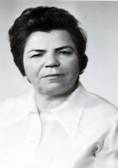 In August 1962 the post of the head at department was occupied by pupil of A.M. Ziukov professor Oleksandra Semenivna Sokol (1919-2001). She was born in v. Rogoziv Boryspil district in Kyiv region in the family of peasants. She graduated with honors from KMI, was a post-graduate and doctoral student at department. After successful defense of doctor’s dissertation (1956) she was the head at department of infectious diseases in Chernivsty medical institute during 9 years.
In August 1962 the post of the head at department was occupied by pupil of A.M. Ziukov professor Oleksandra Semenivna Sokol (1919-2001). She was born in v. Rogoziv Boryspil district in Kyiv region in the family of peasants. She graduated with honors from KMI, was a post-graduate and doctoral student at department. After successful defense of doctor’s dissertation (1956) she was the head at department of infectious diseases in Chernivsty medical institute during 9 years.
For 27 years of her work, the collective of department preserved and developed the traditional scientific direction, paying the special attention to viral infections. Studying the natural and adaptive reactions of organism. O.S. Sokol in 1965 suggested the way to treat uncomplicated flu and other ARD without applying chemical antipyretics, which in the future received the wide acknowledgment in the country. The inexpediency in application of corticosteroids in treatment of uncomplicated acute viral hepatitis.
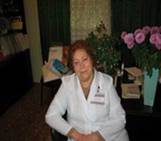 In July 1989 the post of the head at department was occupied by graduate from KMI and department professor Zhanna Ivanivna Vozianova. She was born on 6, February, 1937 in c. Kirovabad (Tajikistan) in the family of military men. In 1960 she graduated with honors from KMI. In 1969-1970 after work as a general practitioner in different medical establishments, she studied in clinical residency at department of infectious diseases in KMI. Ahead of schedule she defended the candidate’s dissertation (September, 1971). She worked as an assistant, assistant professor at department of infectious diseases in KMI, she passed the whole way of pedagogical worker at department. Since the time when she became the head at department, the main directions in departmental scientific activity were extended – the issues on pathogenesis and treatment of viral hepatitis were studied, more attention was paid to diphtheria, pediatric infections in adults, problems on differential diagnostics in the clinic of infectious diseases. In 1991 the department of infectious diseases was appointed to be the supportive one on academic methodological issues among departments in higher medical schools of Ukraine, which were entrusted with teaching academic discipline “Infectious diseases”. Since that moment the department was entrusted with advanced study of teachers in this discipline at higher medical schools of Ukraine with all accreditation levels.
In July 1989 the post of the head at department was occupied by graduate from KMI and department professor Zhanna Ivanivna Vozianova. She was born on 6, February, 1937 in c. Kirovabad (Tajikistan) in the family of military men. In 1960 she graduated with honors from KMI. In 1969-1970 after work as a general practitioner in different medical establishments, she studied in clinical residency at department of infectious diseases in KMI. Ahead of schedule she defended the candidate’s dissertation (September, 1971). She worked as an assistant, assistant professor at department of infectious diseases in KMI, she passed the whole way of pedagogical worker at department. Since the time when she became the head at department, the main directions in departmental scientific activity were extended – the issues on pathogenesis and treatment of viral hepatitis were studied, more attention was paid to diphtheria, pediatric infections in adults, problems on differential diagnostics in the clinic of infectious diseases. In 1991 the department of infectious diseases was appointed to be the supportive one on academic methodological issues among departments in higher medical schools of Ukraine, which were entrusted with teaching academic discipline “Infectious diseases”. Since that moment the department was entrusted with advanced study of teachers in this discipline at higher medical schools of Ukraine with all accreditation levels.
 Since 2005 until 2009 the head at department was assistant professor, Candidate of Medicine Anatoliy Mykhaylovych Pechinka. Author of 135 scientific works, has two patents for useful model. Anatoliy Mykhaylovych managed the department during the change in clinical base of department when they had to move from Oleksandrivska hospital for the period of repair in the center of infectious diseases and to arrange the classrooms on the bases of CCH No 9 and 15.
Since 2005 until 2009 the head at department was assistant professor, Candidate of Medicine Anatoliy Mykhaylovych Pechinka. Author of 135 scientific works, has two patents for useful model. Anatoliy Mykhaylovych managed the department during the change in clinical base of department when they had to move from Oleksandrivska hospital for the period of repair in the center of infectious diseases and to arrange the classrooms on the bases of CCH No 9 and 15.
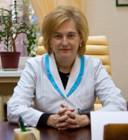 In 2009 the department of infectious diseases was headed by graduate from department, pupil of Zh.I. Vozianova Doctor of Medicine Olga Anatoliyivna Golubovska. She graduated from KMI in 1991, after that she worked as a doctor in infectious diseases ward in Oleksandrivska hospital and in 1993 she was appointed to the post of assistant at department. In 2002 she defended the candidate’s dissertation. Since 2005 until 2009 she worked as an assistant professor at department. After successful defense of doctor’s dissertation in 2009 she was appointed to the post of the head at department of infectious diseases. The fundamental changes in academic process took place when she started managing the department – transfer to study pursuant to principles of CMSOAP that required the establishment of the new, grounded, large-scale methodical provision of academic process both for students from all graduation directions of study at higher medical schools in Ukraine of IV accreditation level and for teachers at departments of infectious diseases in other medical high schools of Ukraine. Many efforts were made to establish the conditions for academic process, training young staff, performance of scientific researches, and consolidation of relations with practical chain of health care. The changes also took place in the work of clinical bases of department; in 2012 the department received one more clinical base – infectious diseases ward in KCCH No 5.
In 2009 the department of infectious diseases was headed by graduate from department, pupil of Zh.I. Vozianova Doctor of Medicine Olga Anatoliyivna Golubovska. She graduated from KMI in 1991, after that she worked as a doctor in infectious diseases ward in Oleksandrivska hospital and in 1993 she was appointed to the post of assistant at department. In 2002 she defended the candidate’s dissertation. Since 2005 until 2009 she worked as an assistant professor at department. After successful defense of doctor’s dissertation in 2009 she was appointed to the post of the head at department of infectious diseases. The fundamental changes in academic process took place when she started managing the department – transfer to study pursuant to principles of CMSOAP that required the establishment of the new, grounded, large-scale methodical provision of academic process both for students from all graduation directions of study at higher medical schools in Ukraine of IV accreditation level and for teachers at departments of infectious diseases in other medical high schools of Ukraine. Many efforts were made to establish the conditions for academic process, training young staff, performance of scientific researches, and consolidation of relations with practical chain of health care. The changes also took place in the work of clinical bases of department; in 2012 the department received one more clinical base – infectious diseases ward in KCCH No 5.
Since 2011 O.A. Golubovska is the Chief extraordinary specialist at MHC of Ukraine on specialty “infectious diseases”, deputy Chairman in Republican task commission “Infectious and parasitic diseases” at MHC of Ukraine, member in Specialized Academic council SE “L.V. Gromashevskyy Institute of epidemiology and infectious diseases at NAMS of Ukraine”, member in Scientific expert council on issues of HIV-infection/AIDS and tuberculosis in State service of Ukraine on issues of contraction to HIV-infection/AIDS and other social dangerous diseases. Since 2012 she is the chief editor in journals “Modern infections” and “Clinical infectology and parasitology (international scientific practical journal)”. Under her editorship in 2012 they published the textbook “Infectious diseases”, approved by MHC and MESYS of Ukraine as a single basic textbook for academic discipline “Infectious diseases” in pre-graduation training of students in higher medical schools of III-IV accreditation levels. She is the co-author for textbook in English “HIV-INFECTION a tutorial for medical students” and lectures “Study guide of the lecture of course infection disease”. Author of 144 scientific works, among them 16 study guides, 7 patents for useful model. She is the scientific supervisor for 4 intramural post-graduate students at department, 1 candidate. 3 more candidate’s dissertations are planned.
The history of department continues…



